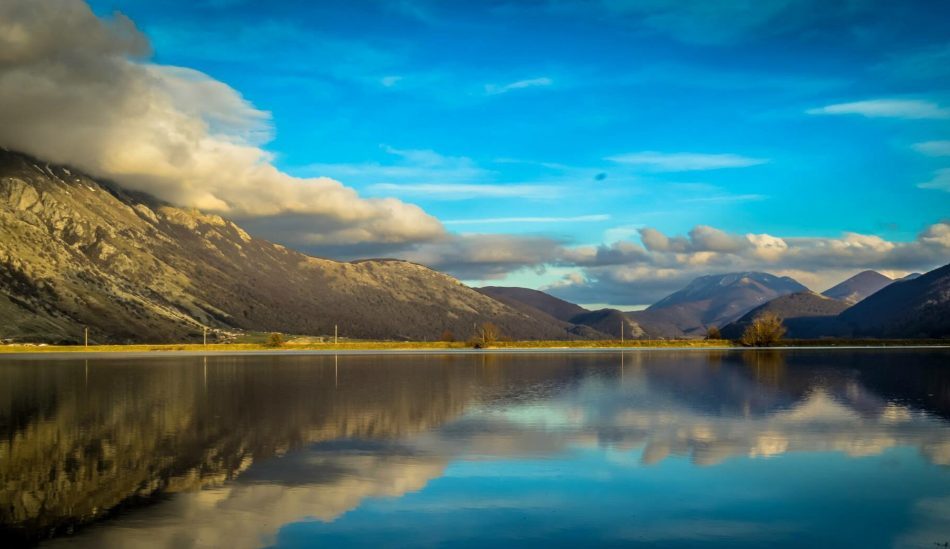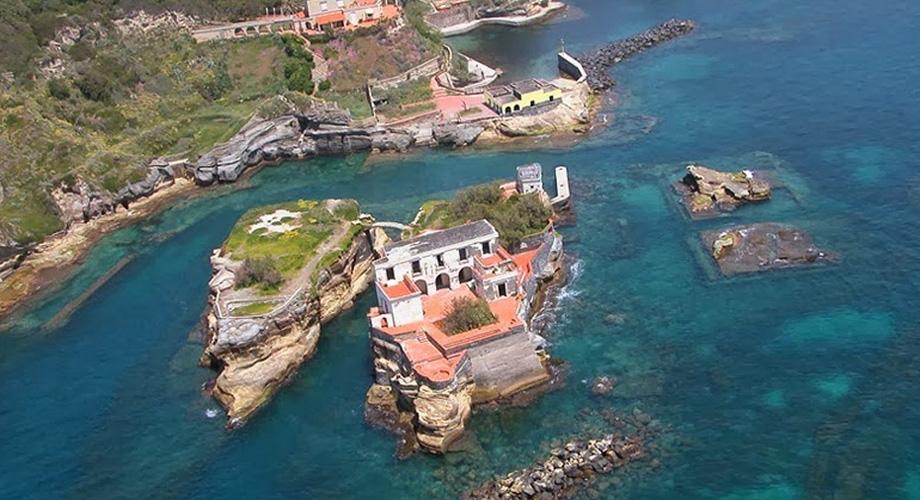
The most enchanting underwater caves and parks of Naples, islands and surroundings.
The beauties of Naples are innumerable and among these it is impossible not to mention them Submerged Parks and suggestive Sea Caves which especially enrich the islands of the Gulf, such as Capri and Ischia.
Even in the city, however, it is possible to reach some of these places, both by sea and by land, as theMarine Protected Area of Gaiola and the numerous tufaceous cavities along the coast of Posillipo, not forgetting the Scoglione di Marechiaro.
Moving away for a few kilometers, it will be possible to take boat trips on the note Blue Grotto of Capri or in the mysterious Cave of the Magician of Ischia, while a Submerged Bay scuba diving in the Roman ruins is also planned. Here is a list of marine beauties most important between Naples and surroundings.
Submerged Park of Gaiola
The Submerged Park of Gaiola is a 'Marine Protected Area located in the Posillipo district. It extends from Marechiaro to the Bay of Trentaremi and is an important research and training site. It is very popular especially in summer for the crystalline beauty of its waters and the evocative panorama that includes part of the Cavallara rocky bank, the high ridges and the cliffs in the Neapolitan Yellow Tuff.
It takes its name from the two islets of Gaiola and is characterized by a particular mixture of volcanological, biological and archaeological aspects. On its depths there are the remains of tuff quarries, landing places, fish ponds, nymphs and monumental Roman villas (like that of Publio Vedio Pollione, now visible in the Park of Pausilypon), submerged by the millennial effect of bradisimo. The marine fauna is varied and rich in bream, octopus, moray eels, damsels and guarracini.
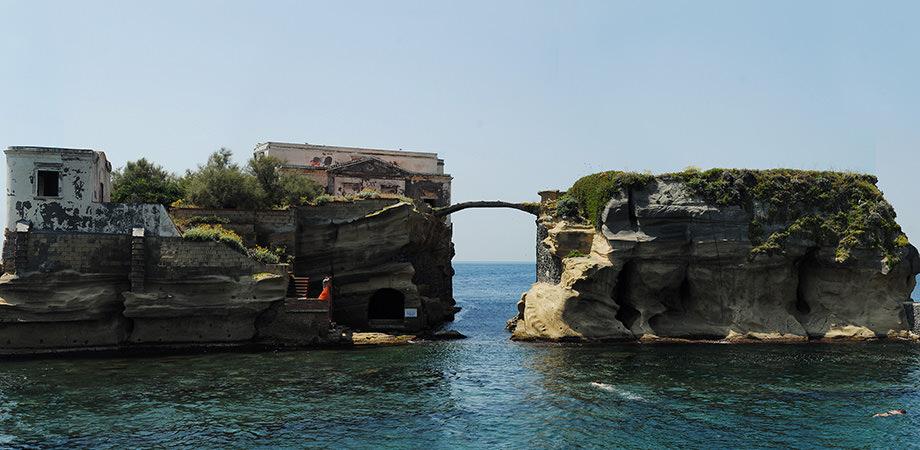
Address: Descent Gaiola (Cliff Cala S.Basilio) - 80123 Naples
Submerged Bay Park
Also called the small "Roman Atlantis", Is a Marine Protected Area north of the Gulf of Naples, in the context of the Campi Flegrei Archaeological Park and, together with the Submerged Park of Gaiola, is one of the rare examples of archaeological and naturalistic underwater protection in the Mediterranean.
Because of the bradyseism, whose effects last for at least 2000 years, the coast has been submerged for 7-8 meters, so today precious Roman remains can be found on the seabed. There are the nymphaeum of Emperor Claudius and that of Punta Epitaffio, streets and ruins of buildings, villas, a spa complex, mosaics, frescoes and sculptures. Marine life is very rich with anemones, starfish and castagnole. You can visit the park on board boats with a transparent backdrop or go scuba diving.
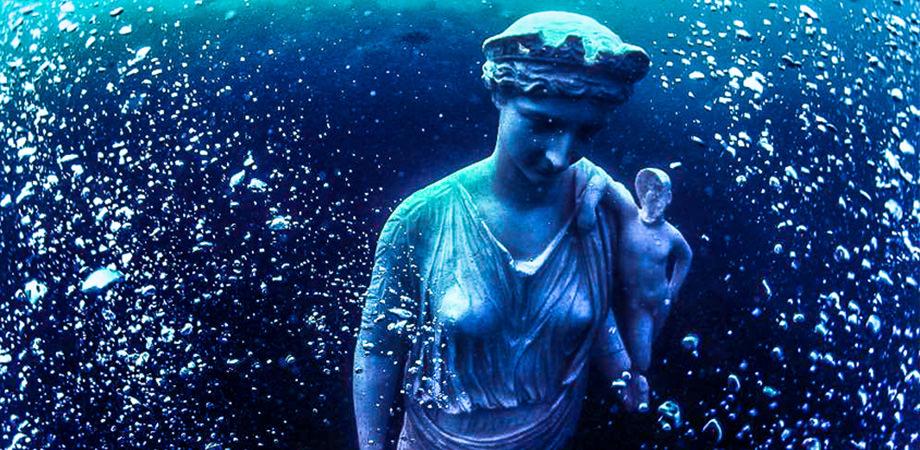
Address: Port of Baia, Via Molo di Baia 20 - 80070 Bacoli (NA)
Posillipo Marine Caves
Skirting the boat coast of Posillipo you can come across a series of very suggestive sea caves. It is a series of tufaceous cavities of different sizes, more or less high and of variable depth. I'm reachable only from the sea and by taking an excursion along the coast you can also go inside some of them. Continuing to navigate, you can reach the famous Bay of Trentaremi, one of the two borders of the Submerged Park of Gaiola, also with enchanting caves and a small beach among the most beautiful of the entire coast, very fascinating especially at sunset.
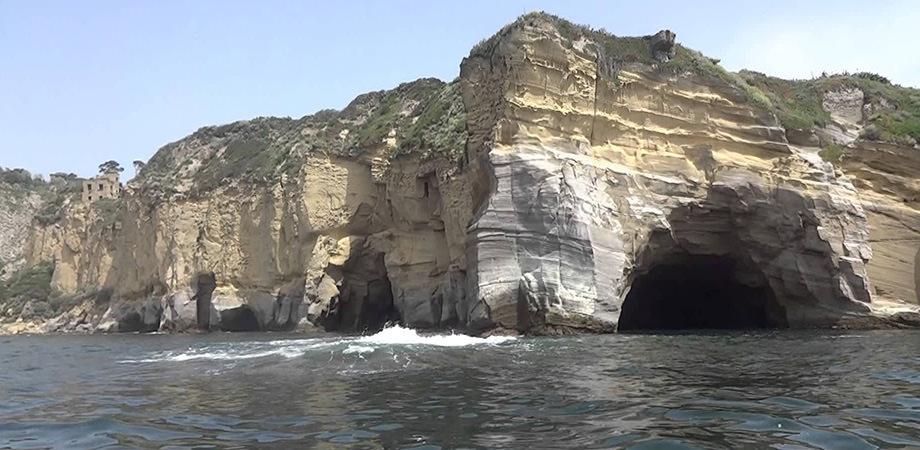
Address: coast of Posillipo - 80122 Naples
Marechiaro
The Borgo di Marechiaro is located in the Posillipo district and is famous for its characteristic Scoglione (a long cliff) and for the fenestrella which inspired the poet Salvatore di Giacomo to write the Neapolitan classic "Marechiare". Its name derives from the tranquility of its waters and not from their clarity, as can be mistakenly believed. It is one of the most fascinating places in Naples, very popular in the summer, with an enchanting little beach that overlooks the transparent sea and from which you can see a panorama of the city lined with fishing boats. Going over the cliff you can reach the Palace of the Spirits, a Roman building of the first century BC, to which many legends are linked.
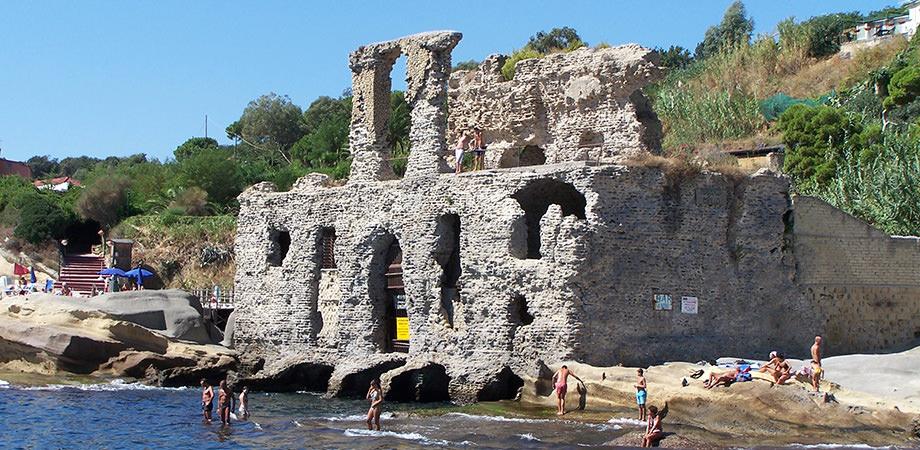
Address: Calata Ponticello to Marechiaro - 80123 Naples
Blue Grotto
La Grotta Azzurra is one of the most popular tourist destinations in Campania and is one Karst cavity of exceptional charm that is located in Capri. The entrance is partly covered by the sea and the sunlight that filters from the outside, reflecting in the water, helps to give it that particular deep blue color that makes it so suggestive. It's a nymphaeum of the Roman age, consisting of many underground rooms, of which only one is visible to visitors: the Blue Cathedral. There are numerous tunnels, whose height can vary from 7 to 35 meters, which lead to a platform buried in the sea by the Romans, to the Galleria dei Pilastri and to the Hall of Names, with the signatures of the visitors of '800 and' 900. The cave ends with the Corrosion Hall.
By Glen Scarborough – https://www.flickr.com/photos/photographerglen/5963978964/, CC BY-SA 2.0, https://commons.wikimedia.org/w/index.php?curid=50577361
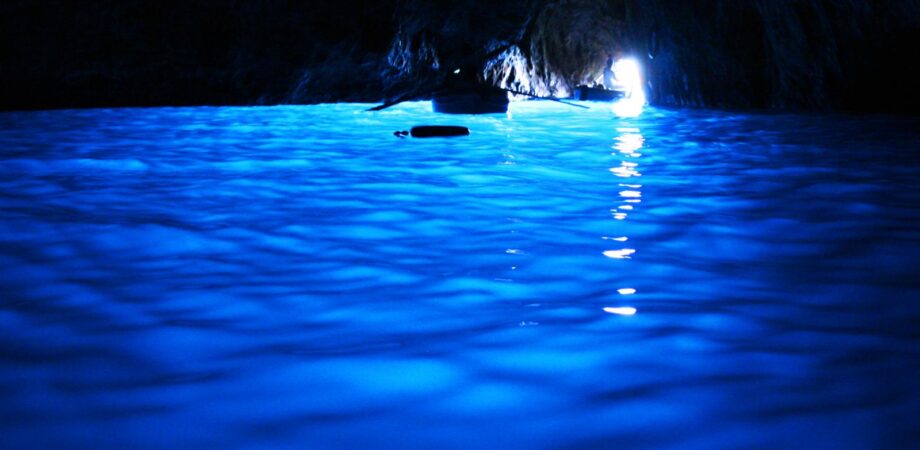
Address: Via Grotta Azzurra - 80071 Anacapri (NA)
Green Cave
Note in the past how Cave of the Turks, the Green Grotto is located in the southern part of the island of Capri and owes its name to the particular play of light on the sea that gives it an original emerald green color. In the sixteenth century it was attacked by various pirates and was probably used as refuge from the corsairs who wanted to surprise the passing boats by surprise. The Grotta dei Turchi name probably originated from these events. It has two thresholds, one submerged at 4 meters and the other at sea level, 7 meters high. Its walls are made of dolomite, the oldest rock on the island, and was formed over the centuries due to marine erosion. It can only be reached by sea.
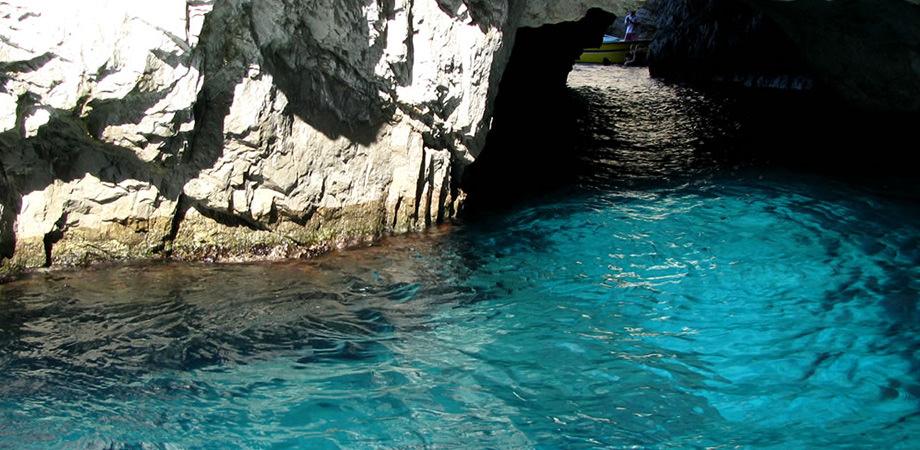
Address: southern area of the island - 80071 Anacapri (NA)
White Cave
It is always located in Capri, in the eastern part of the island, near the Punta della Chiavioa, and it is so called for the calcareous white incrustations that are found on the walls and for the groups of white stalactites hanging from the ceiling. The entrance is about 24 meters high and consists of a series of tunnels that are not all accessible. It can only be accessed by boat and it is said that there is one inside stalagmite that recalls the Madonna in prayer.
Once inside, the visit can also continue on foot as there is a ladder carved into the rock that allows you to climb up to the top to observe the stalactites and stalagmites.
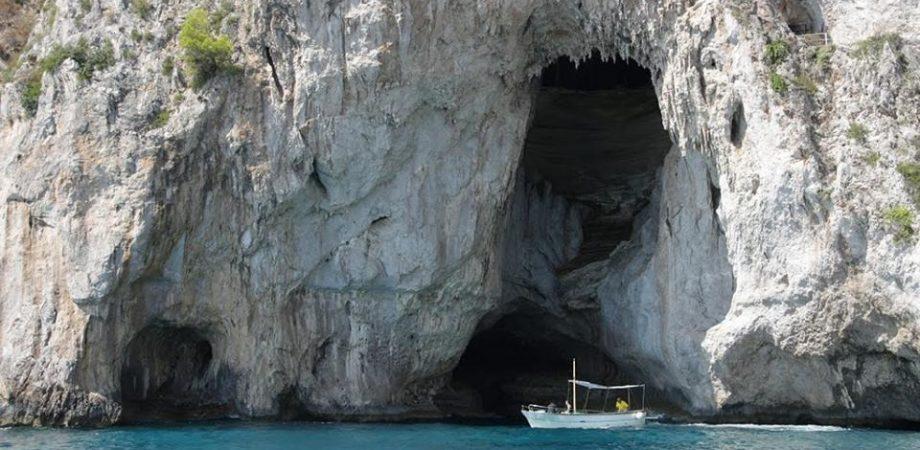
Address: eastern part of the island - 80073 Capri (NA)
Cave of the Magician
One of the most enchanting destinations ofIsland of Ischia, this cave he changed his name several times over the centuries, calling itself from time to time Grotta di Terra, Grotta di Bordo, Grotta del Tisichiello, Grotta d'Argento, Grotta del Sole and finally Grotta del Mago. It is cloaked in legend because it is said that the fishermen, taking refuge in its walls, often saw one elderly giant with a thick white beard. Other stories tell of the presence of beautiful water lilies or marine deities, perhaps mermaids.
You can reach it only by sea, letting yourself be transported by the mysterious atmosphere that hovers between its walls.
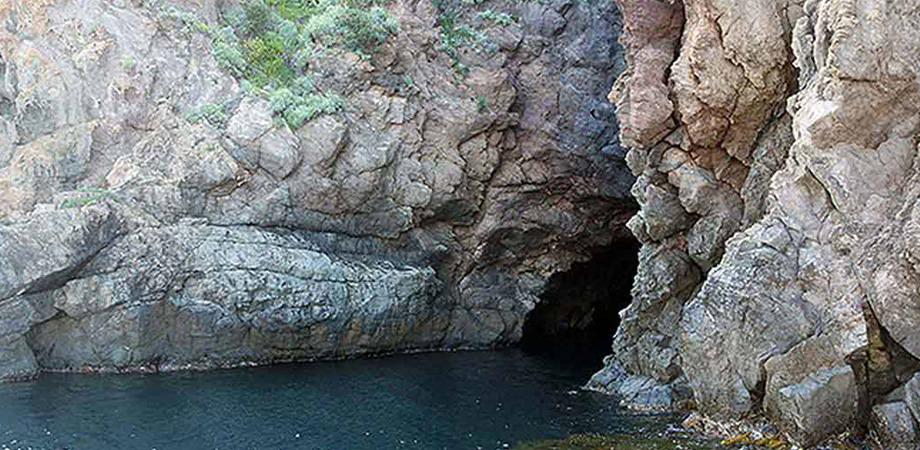
Address: south-eastern area of the island - 80070 Ischia (NA)
Grotta dello Smeraldo
The Emerald Grotto is located in the Amalfi Coast, In the municipality of Conca dei Marini, a few km from Amalfi, and the sunlight reflecting off its waters, creating a particular play of reflections, gives it the green color at the origin of its name. It is about 24 meters high and rises inside it columns of over 10 meters formed by the unions of numerous stalactites and stalagmites formed over the millennia. In its backdrop from 1956 there is a submerged crib with ceramic shepherds from Vietri where still today the fishermen lay flowers at the feet of the Child Jesus, at Christmas time. One lives in his waters rare species of coelenterates, marine animals that live in places where there is no light.
Its particular characteristics are also due to the fact that originally it was below sea level, but bradyseism has caused its lowering over the centuries.
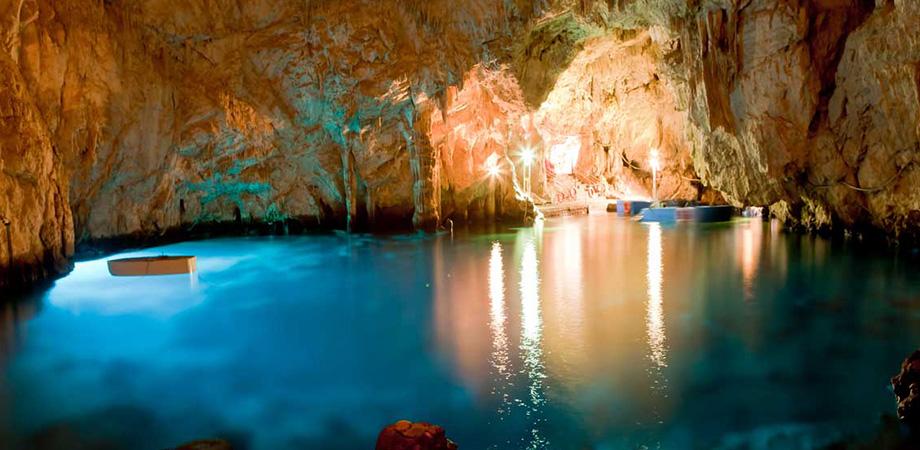
Address: Conca dei Marini, Amalfi Coast - 84010 Salerno
Furore
The Fiordo di Furore is one very narrow body of water at the base of an overhang, formed over the years with the wear and tear of the Schiato torrent. Residents and tourists crowd it in the summer, not only because it is one of the most fascinating places in Campania, but also because it is a very "shelter" because the sun hits it only in the early hours of the afternoon.
It is a site Unesco World Heritage and his name can have two origins. The first comes from a legend that tells that the Devil visited the town of Furore but, chased by the inhabitants, he fled furious after eating by mistake nettles. According to historians, however, the name is given by the force with which the waves break on the rocks.
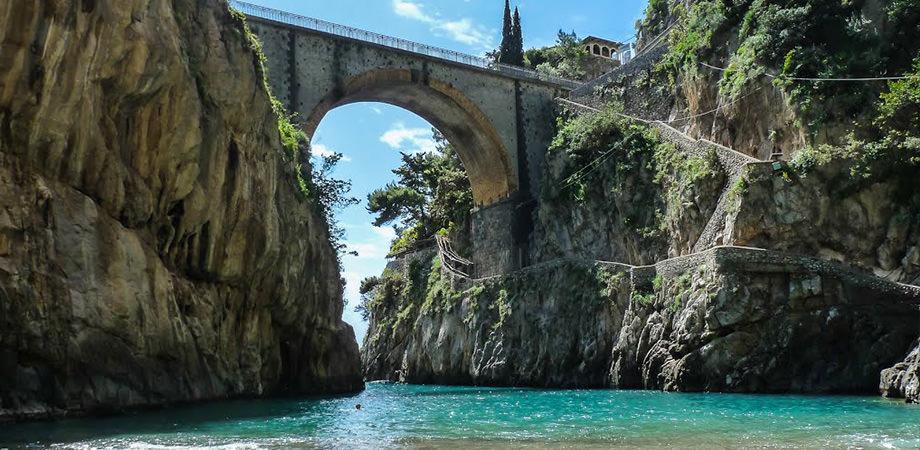
Address: Furore - 84010 Salerno

